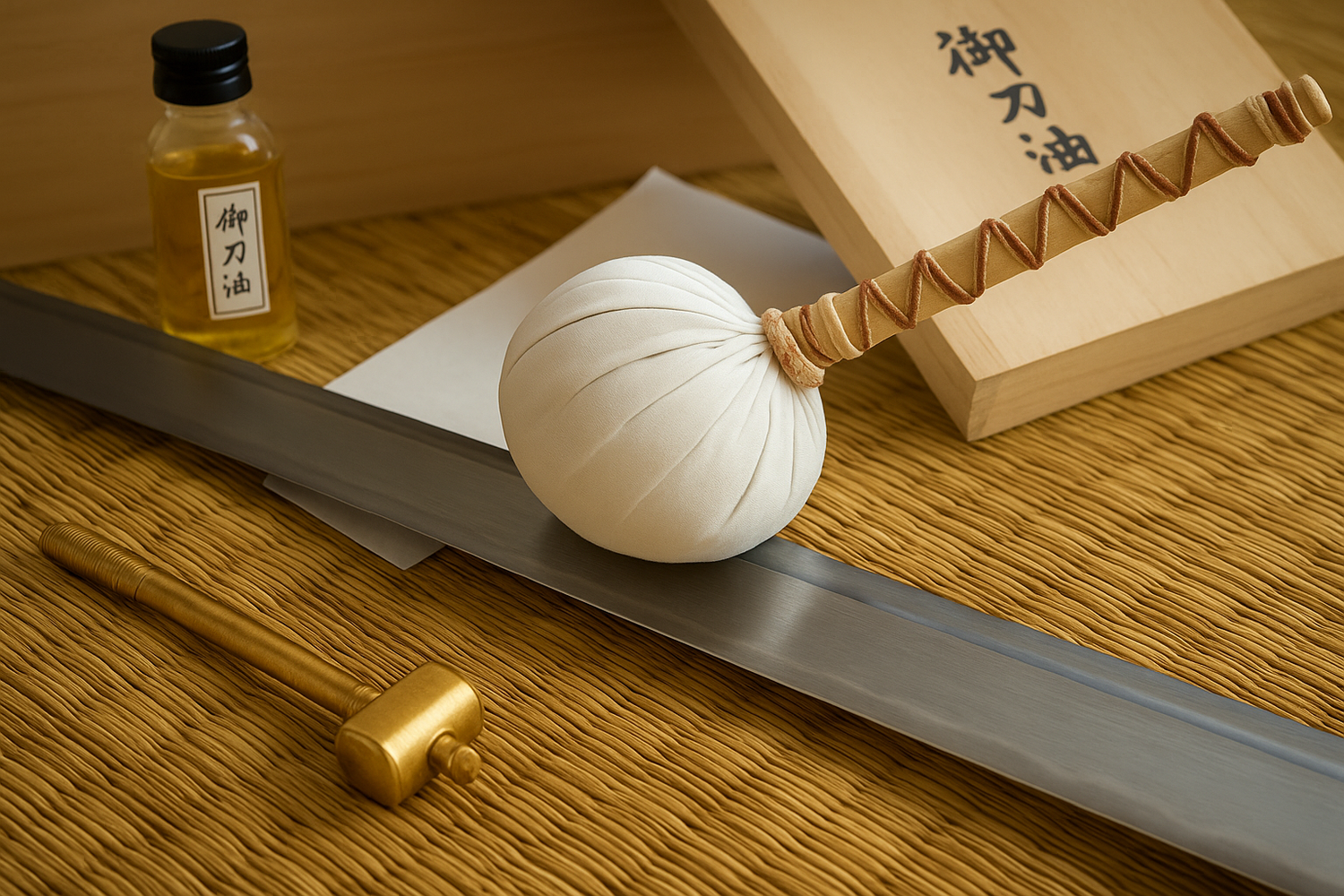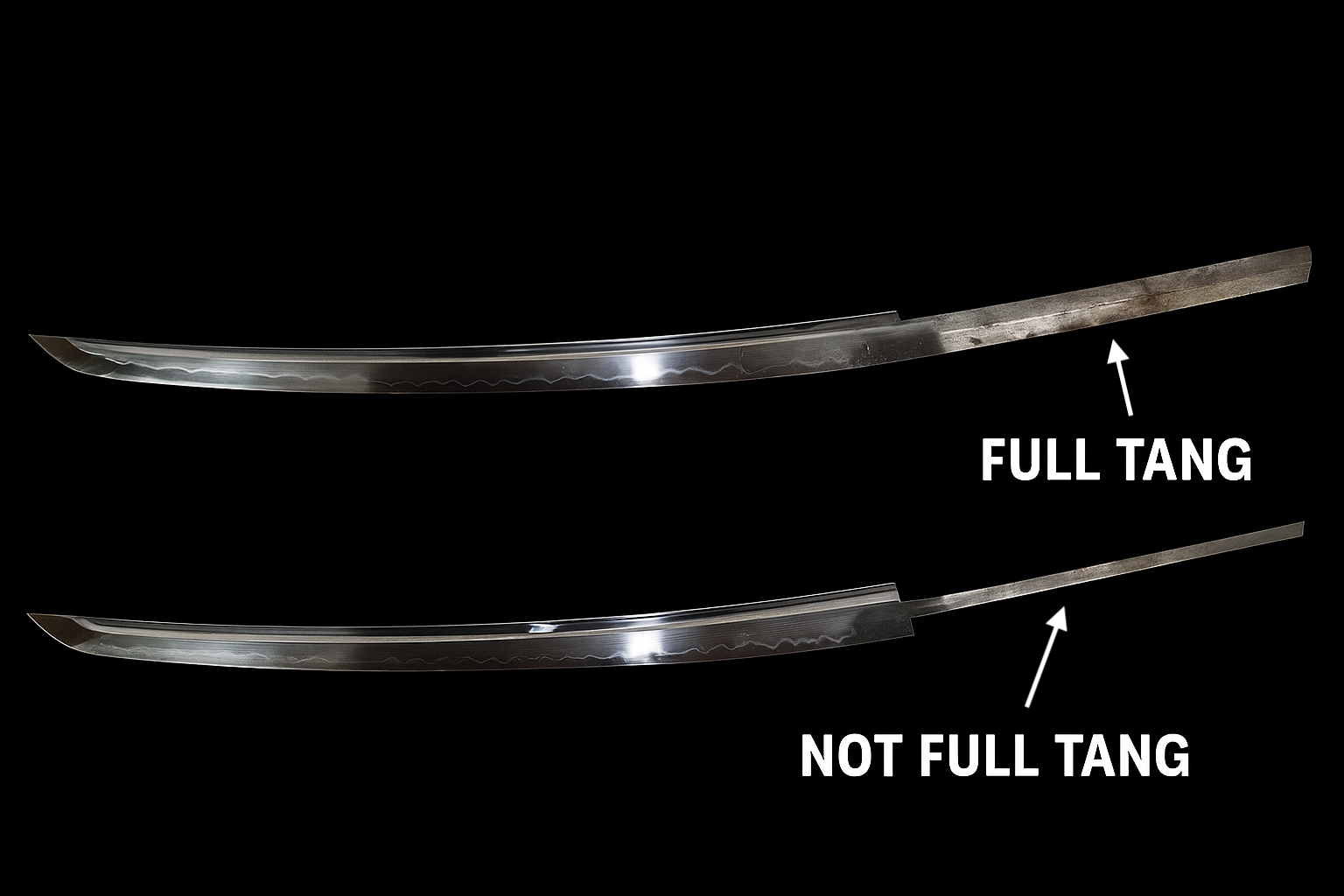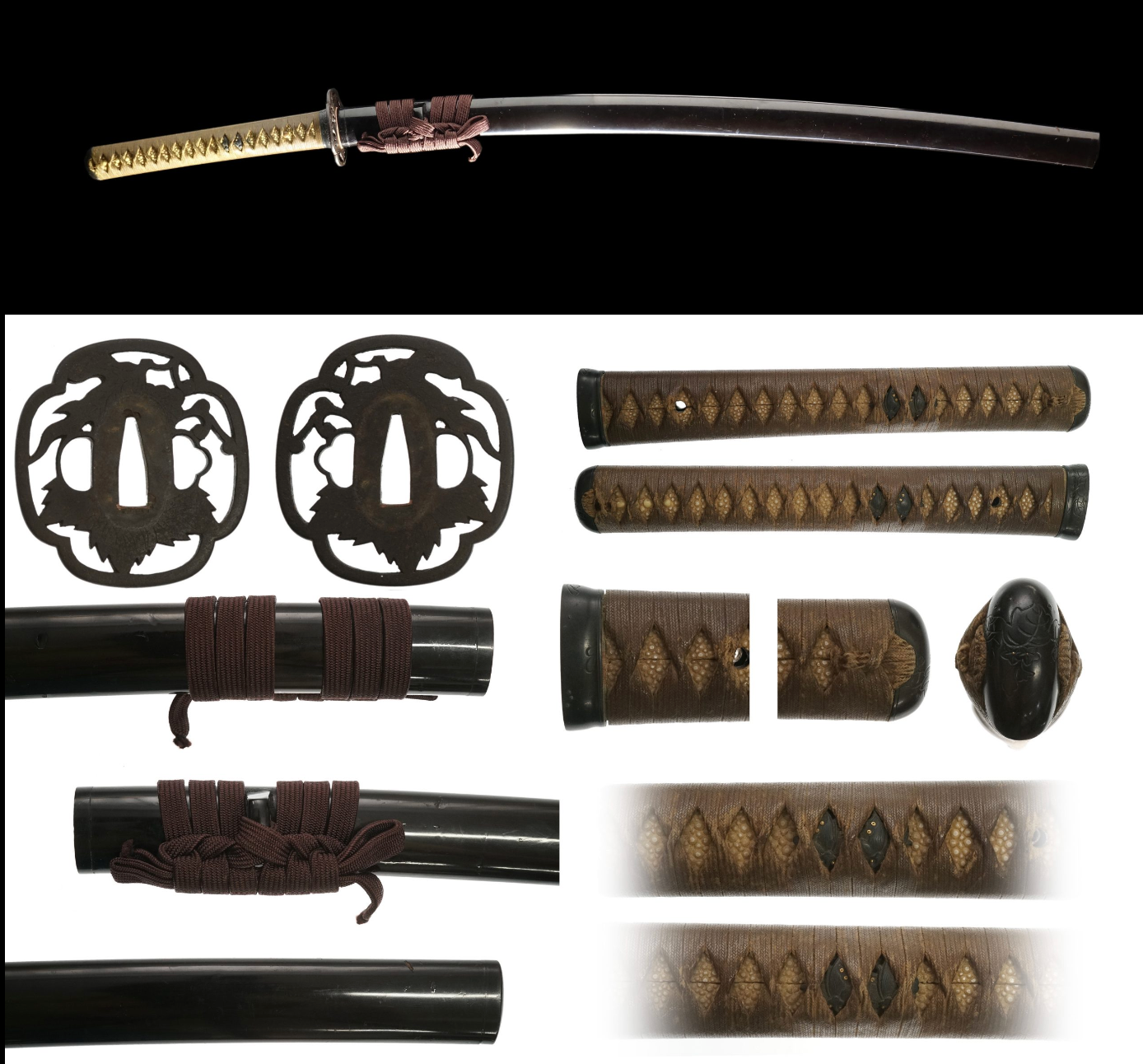A katana is not just a beautiful piece of craftsmanship, it is a sharp and living tool that requires respect and regular care. Whether you use your sword for training, display, or as a collector's item, proper care is essential to maintain both function and aesthetics.
1. Avoid fingerprints
Steel is sensitive to moisture and acid, and our fingers contain both. Always wipe the blade immediately if you happen to touch it with your bare hands. Use a microfiber cloth or rice paper.
2. Oil regularly
A katana should be oiled to protect the blade from rust. Use traditional sword oil such as choji oil (a mixture of mineral oil and cloves) or a neutral, acid-free oil.
-First wipe the blade with a clean cloth.
-Use a few drops of oil and spread a thin layer over the entire blade.
-Do this every 1-3 months depending on climate and storage.
3. Store properly
The katana should be stored horizontally in its saya (sheath), with the edge facing up . Store it in a dry and cool place, away from direct sunlight, moisture or heat sources. Avoid basements and bathrooms.
4. Use the right cleaning kit
A classic katana cleaning kit contains:
-Uchiko powder : a fine polishing powder used gently to clean the blade.
-Choji oil : to protect the blade.
-Rice paper : for wiping.
-The stick with hammer (mekugi-nuki) : to loosen the tsuka (handle) when disassembling.
5. Handle with respect
Avoid hitting the blade against hard surfaces. Test cuts should always be made with the correct technique and aim. A careless hit can damage both the blade and your hand.
Tip: Avoid these common mistakes
-Never clean with water or detergent.
-Never store your katana in a humid environment.
-Never use household oil or WD-40.
With proper care, your katana can last for generations. It's not just a matter of aesthetics, it's a way of showing respect for the craftsmanship and tradition the sword represents.



